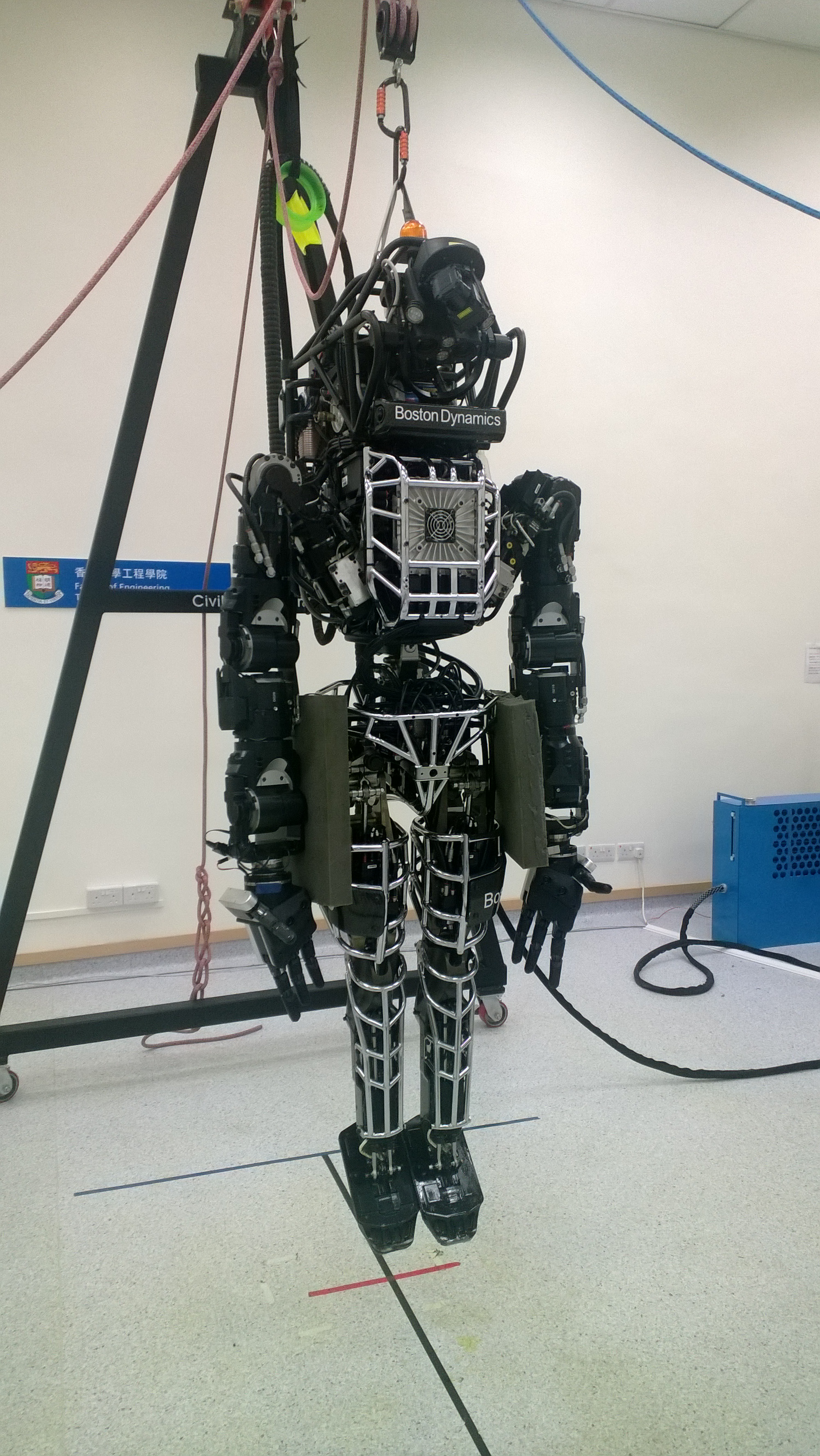by Donald Lam | Photo Credits: Donald Lam | 11 November 2013
Unveiled only as recently as this July by Boston Dynamics, only seven Atlas robots of the same working prototype exist around the world. The HKU robot is the only one outside of the United States so far.
The October Mishap
The HKU Atlas had a glitched media demonstration event on the 17th October just this year. As furiously reported by the media, notably the SCMP, the Register and Singtao Daily (Chinese only), the Robot lost balance, fell, and damaged its right ankle.
To get the full behind the scenes story, we reached out to Prof. Wyatt Newman, visiting professor from CASE Western Reserve University who leads the HKU Advanced Robotics Initiative, for comments.
Explaining the Ankle
There were 2 main problems related to calibration errors that could explain Atlas’ behavior on the 17th. There were also some software bugs that exaggerated Atlas’ calibration problems.
One was with the robot’s ability to measure and balance out the inertia; and the other with the sensors on his feet that measures local force/torque.
During the demo, Atlas’ Inertial Measurement Unit (IMU) failed to lock in on a home pose. This gave him poor balances and left him walking like he was drunk. “[It] was something like vertigo.” Said Prof. Newman.
Earlier on the day, Atlas had scuffed his foot harshly due to an operator error. The operator lifted him up with the supporting cable while Atlas was still trying to maintain balance, causing him to kick his feet against the floor.
This was believed to have caused an offset in the force/torque sensors on the soles of his feet. The miscalibration caused Atlas to misinterpret sensory cues, causing him to further lose balance during the demo.
Solving the Problem
The software that assists in sensor recalibration was only released by Boston Dynamics some time after the media event.
|
The HKU Atlas
Weight (incl. powerpack): 150 kg Height: 1.88 m Power: 480V 3-phase at 15 kW Interface: 10 Gbps Fiber Optic Ethernet, C++ and ROS APIs Price: HK$15 million, includes a maintenance contract |

A spin-off engineering company from the Massachusetts Institute of Technology (MIT) that specializes in building dynamic robots. See the company’s other robots such as BigDog, PETMAN, RISE, SquishBot, and many others here. The company also develops tools for human simulation. DI-Guy is a human simulation product used for simulation-based training, used by even the US armed forces. |
|
The HKU Advanced Robotics Initiative |
|
Atlas’ Housewarming On the HKU u-vision channel: |
With the use of the recalibration software, the research team had restored Atlas’ sense of balance.
In fact, four days before the much publicized mishap on the 13rd, Atlas had a problem with his left ankle as well. It was a electrical connector problem separate to that on the 17th. Due to this “nerve damage”, the corresponding actuator misbehaved, driving his ankle, which has 2 DoF(Degree of Freedom), to the extreme rotation. They could not make him walk until the problem was solved.
More Recent Challenges
These maintenance challenges no doubt have a negative effect on Team HKU’s preparations for the upcoming DARPA robotics challenge.
“It was anticipated that these prototypes would have need for fixes, as problems are discovered.” Said Prof. Newman, “we expect that all teams are having similar maintenance challenges.”
Only recently, Atlas has developed yet another problem. Some of the hydraulic seals that keep in the pressurized liquid used to transmit mechanical power, have been ruptured and he was leaking hydraulic fluid rapidly, requiring constant refills.
The leak came at an untimely moment as one of the requirements to enter the DARPA challenge trials this December was to have Atlas demonstrate certain required behaviors in 10-minute runs.
Fortunately, the HKU Atlas managed to run for 10 minutes between hydraulic fluid refills and got itself an assured spot in the competition. Atlas has been serviced to replace the ruptured hydraulic seals since then.
Looking Forward
The countdown to the DARPA showdown is at 39 days now and Team HKU is optimistic about putting on a good show in the States.
In fact, HKU has been doing quite well in terms of software engineering progress. We were the first of the seven competing institutions to get the robot’s head, body and hands all working. In the DARPA simulation trials back in June, Team HKU finished 9th in the world.
Most recently on the university’s Information Day for undergraduate admissions, the Advanced Robotics Laboratory had opened its doors to the public and shown off our Atlas, back in prime shape.
“We are developing the software with CASE Western Reserve, with Tokyo and with Edinburgh… and we are putting ourselves up there with MIT, with Caltech, with Carnegie Mellon.” Said Prof. Newman, “Atlas puts HKU and Asia on the map for robotics.”
Video Footage of the Oct 17th incident from PressTV:
http://www.youtube.com/watch?v=M0o7BGYBH58



